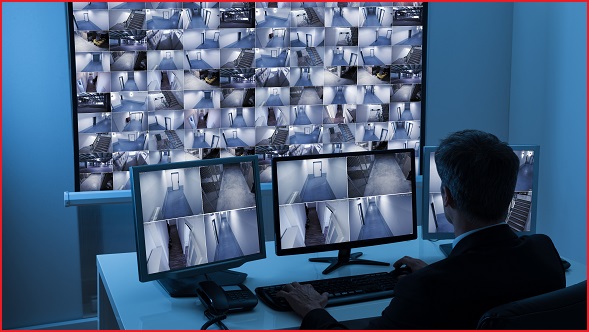Australian workers may have been able to work at home during the pandemic, but we draw the line at employers using monitoring technology to track their productivity levels, new research reveals.
The vast majority of Australians baulked and didn’t support monitoring measures. This was regardless of whether they are for productivity, security or support purposes.
The research found 85 per cent were not comfortable with their employer accessing their login passwords, 82 per cent were not comfortable having their computer camera accessed to use facial recognition to authenticate if it was them sitting at the computer.
And eighty-one per cent of us aren’t comfortable having our web browser history accessed on a personal device, and 81 per cent didn’t want their computer screen or keyboard activity accessed or monitored.
Overall, females and self-employed SMEs were the least comfortable with monitoring measures.
The top four security concerns are data/privacy related: ID theft (59 per cent), hacking and viruses (57 per cent), bankcard fraud (55 per cent) and online shopping (49 per cent).
A new approach
The Unisys Security Index findings highlights the need for a new, outcome-based approach to performance management and for open conversations about privacy, acceptable purpose, trust and permission.
Leon Sayers, director of Advisory at Unisys in Asia Pacific says people are protective of their home space. It means that employers must gain trust and permission to introduce monitoring technologies into that space, he says.
“While for many people, working from home offers benefits of less commuting and more work-life balance, for others it’s an imposition necessitated by the Covid response. Being mandated to work from home is not the same as volunteering for it.
“A two-way discussion is critical to successful organisational change management. And just because the technology allows you to do something, doesn’t mean it’s always appropriate,” he says.
Sayers says it is time to re-think how managers monitor performance and productivity. “First you need to look at the type of role. What is more crucial – the input (time spent on a task) or the output (the deliverables).”
For example, using technology to monitor how quickly call centre staff working from home answer a call and resolve a customer’s problem is a key metric of the role and service delivered to the customer. Whereas for other knowledge jobs, it would be more relevant to measure if they delivered something of the agreed quality by the required deadline – you don’t need to know when they logged in or how long it took them, he says.
New functions
But we don’t deem all monitoring measures to be big brother, the Unisys research found. Some monitoring measures offer positive benefits to employees – such as monitoring software response time so the IT team can proactively fix impending issues before they impact you – called ‘intelligent IT support’, or using facial recognition to quickly confirm that it’s you sitting at your laptop, without needing to re-enter the password.
“But adding new function and purpose to an existing tool requires a fresh conversation. We accept webcams at home to aid collaboration – not security. Employers need to lead open discussions about the intended purpose and benefit of such measures if they are to be accepted in the home workplace. The willingness to use a technology is critical to the successful roll out of any digital transformation,” Sayers says.
People aged 18-24 years are the least comfortable with having their log in-out times monitored (27 per cent compared to 35 per cent and higher for older age groups).
However, young people are more comfortable with proactive monitoring of software response times than older people, perhaps signalling the way the future digital workforce expects to be able to access the IT tools they need to do their job.
Measure outcomes
We might not want our keystrokes measured, but we are more content to have outcome measured.
A second survey by Gartner also confirms that Australian workers are not inclined to approve any method of digital surveillance to a notable degree. Of workers surveyed, 20 per cent said no form of monitoring is acceptable. Measuring task outcomes and frequent worker-manager check-in meetings are the most acceptable means of monitoring.
“Employers may monitor worker activities broadly, but should avoid using monitoring software,” Gartner Fellow research vice president Gavin Tay says.
“They should also align any surveillance to existing consents, prioritise health and safety and follow notification rules,” Tay says.
Meanwhile, 34 per cent of Australians say they have been more productive since the start of the pandemic. Their sense of technology mastery has accelerated, with 65 per cent of employees considering themselves either experts or proficient with digital technology, the Gartner survey reveals.
But when there’s a technology issue, Australians still want to call internal IT support and speak to a live person to help resolve technical issues.
“Digital proficiency becomes even more essential for productivity when working remotely. CIOs should extend worker-to-worker lateral mentoring and training to ensure that no employees are left behind as technology mastery becomes the expectation,” Tay says.










